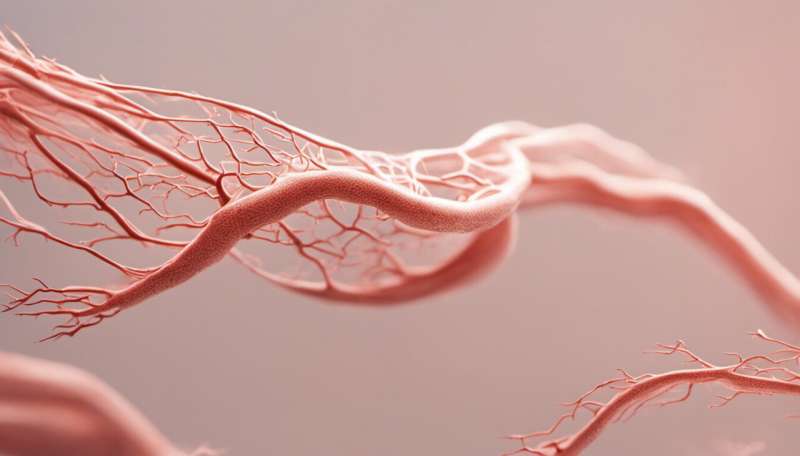Lymph node removal presents higher lymphoedema risk

Cancer patients who have had lymph nodes removed or damaged due to surgery or treatments have an increased risk of developing secondary lymphoedema—a debilitating swelling of the limbs.
Research involving endometrial cancer patients has found surgically removing a greater number of lymph nodes—along with other risk factors, such as treatment using radiation, chemotherapy or anti-inflammatory drugs—increases the risk of developing secondary lower limb lymphoedema (LLL).
Lymphoedema is caused by extracellular fluid gathering around the cancer area or where nodes have been removed.
"The swelling associated with lymphoedema has enormous personal and social costs to women who have had treatments for endometrial cancer," Queensland-based QIMR Berghofer Medical Research Institute lead researcher Dr Vanessa Beesley says.
"Women who experience the physical symptoms of lymphoedema in their legs, feet and groin may have reduced mobility and independence, feelings of isolation, distress and hopelessness, and their social and intimate relationships may suffer."
The national epidemiological study included a cohort of 1243 female endometrial cancer patients.
Western Australia's chief investigator, gynaecologist oncologist, UWA Professor Yee Leung says the study included participation by members of the state-wide Western Australian Gynaecologic Cancer Service who actively recruited patients.
Eligible patients were identified from medical records and researchers collated data from patient interviews, self-monitoring surveys and follow-up questionnaires between three to five years.
Follow-ups report unforseen pain and costs
According to Dr Beesley, one in eight women [13 per cent] treated for endometrial cancer will develop lymphoedema, however, when fifteen or more lymph nodes are removed, along with two other risk factors, a patient has 50 per cent more risk of developing lymphoedema.
"The research also exposed other important issues regarding the care of endometrial cancer patients," Dr Beesley says.
"At follow-up, women reported unmet needs in relation to costs and pain," she says.
LLL has no cure, but early detection and treatments—including compression bandages, exercise, elevation, massage, skin care and even liposuction—can ease its unpleasant symptoms.
"Women who have undergone lymphadenectomy have a very high risk of lymphoedema and need to be informed how to self-monitor for symptoms," Dr Beesley says.
"Our study has been able to quantify the increased risk of developing LLL, but has also helped expose the need for improved consultation prior to surgery, and the need for greater levels of post-surgery support."
Prof Leung says the study has emphasised the importance of appropriate clinical decision-making when considering whether to remove lymph nodes from women with endometrial cancer.















